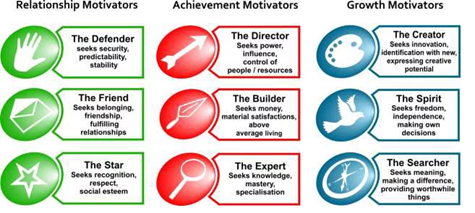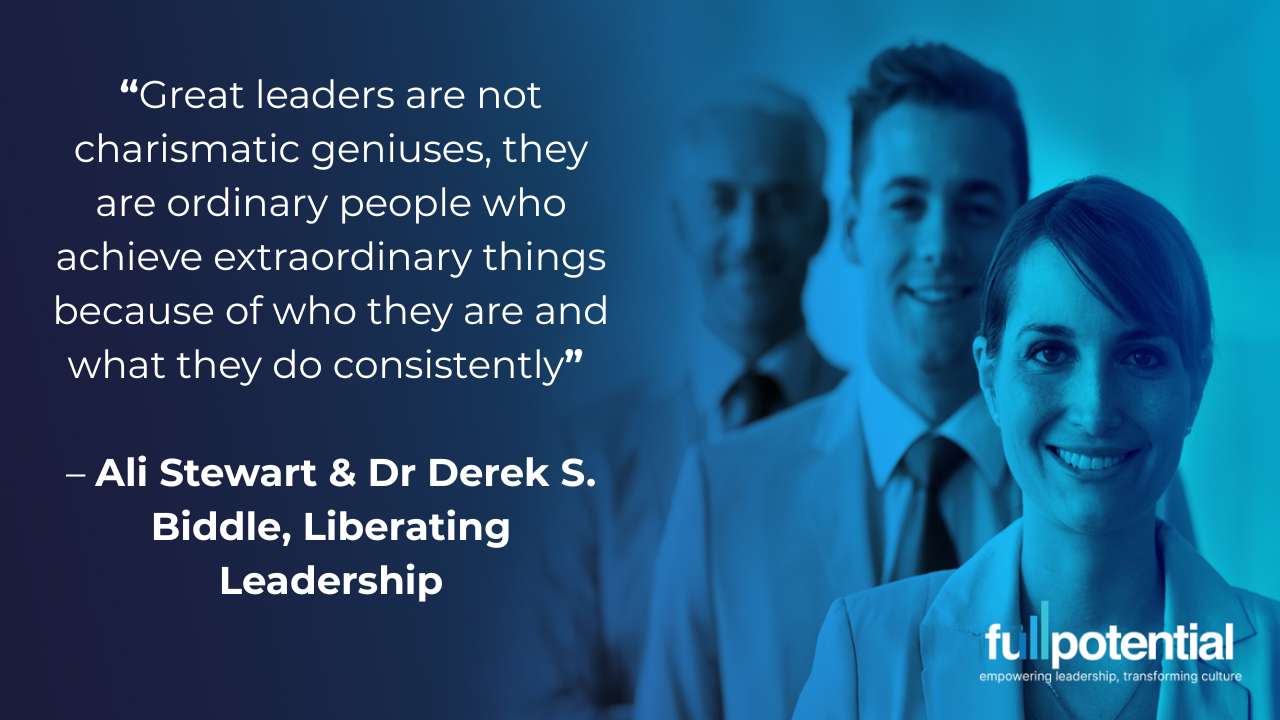Boost morale and productivity: Types of motivation in the workplace

What is Motivation
Motivation serves as the driving force behind performance and engagement in the workplace. It encompasses both intrinsic and extrinsic factors that influence individuals’ behaviour and actions. This section provides a comprehensive definition of motivation and its significance in creating a positive work environment conducive to productivity and success.
Types of Motivation: Intrinsic and Extrinsic
Motivation can be broadly categorised into intrinsic and extrinsic forms. While intrinsic motivation arises from internal rewards, extrinsic motivation is driven by external incentives. Understanding these distinctions is essential for leaders seeking to cultivate a motivated and engaged workforce.
What is Intrinsic Motivation?
Intrinsic motivation stems from personal satisfaction and fulfilment derived from within an individual. It is the inner drive that compels individuals to pursue activities for their own sake, without external rewards. In the workplace, intrinsic motivation manifests as a genuine passion for the work itself, a desire for personal growth and development, and a sense of autonomy and purpose.
What is Extrinsic Motivation?
Extrinsic motivation, on the other hand, originates from external rewards or incentives. It involves seeking rewards or avoiding punishments that come from outside the individual, such as salary increases, bonuses, or recognition. In the workplace, extrinsic motivation may drive employees to perform certain tasks or achieve specific goals in exchange for tangible rewards or recognition from others.
Types of Intrinsic Motivation
Within the realm of intrinsic motivation, various factors drive individuals toward achievement and satisfaction. This section examines the different types of intrinsic motivation and their implications for employee engagement and organisational success.
Competence and Learning Motivation
Competence and learning motivation revolve around the desire for mastery and personal development. Individuals with this motivation are driven by the opportunity to acquire new skills, knowledge, and expertise, and to challenge themselves intellectually. In the workplace, competence and learning motivation may lead employees to seek out opportunities for training, skill development, and career advancement.
Attitude Motivation
Attitude motivation is driven by a sense of purpose and alignment with organisational values. Individuals with this motivation are deeply committed to the mission and values of their organisation, and derive satisfaction from contributing to its success. In the workplace, attitude motivation may manifest as a strong work ethic, a sense of pride in one’s work, and a willingness to go above and beyond to achieve organisational goals.
Creative Motivation
Creative motivation is fuelled by the desire to innovate and explore new ideas. Individuals with this motivation are drawn to tasks and projects that allow them to express their creativity, think outside the box, and generate novel solutions to problems. In the workplace, creative motivation may lead employees to propose innovative ideas, experiment with new approaches, and push the boundaries of what is possible.
Types of Extrinsic Motivation
Extrinsic motivation encompasses various external factors that influence behaviour and performance. This section explores different forms of extrinsic motivation and their impact on employee engagement and satisfaction.
Achievement Motivation
Achievement motivation is driven by external rewards, such as recognition or promotions. Individuals with this motivation are motivated by the opportunity to attain specific goals, receive praise and recognition for their accomplishments, and advance their careers. In the workplace, achievement motivation may lead employees to set ambitious goals, strive for excellence in their work, and seek out opportunities for advancement.
Affiliate Motivation
Affiliate motivation stems from a sense of belonging and social connections. Individuals with this motivation place a high value on relationships and collaboration, and derive satisfaction from working with others toward common goals. In the workplace, affiliate motivation may lead employees to seek out opportunities for teamwork, cooperation, and social interaction, and to prioritise building strong relationships with colleagues.
Incentive Motivation
Incentive motivation is fuelled by tangible rewards, such as bonuses or perks. Individuals with this motivation are motivated by the promise of rewards or incentives, and may be more likely to perform certain tasks or achieve specific goals in exchange for tangible benefits. In the workplace, incentive motivation may lead employees to work harder, take on additional responsibilities, and strive to meet or exceed performance targets in pursuit of rewards.
Motivational Maps: 9 Work Motivators
James Sale’s motivational maps offer valuable insights into the diverse motivations that drive individuals in the workplace. This section provides an overview of the nine work motivators, categorised into three clusters, offering a roadmap for leaders to understand and leverage employee motivations effectively.
Relationship
The Defender
Seeks security, predictability and stability. They like stable, well established organisations, giving clear roles with a set routine and career paths. Boosting their motivation involves regular communication. Leaders should communicate, communicate, communicate, especially good news about the organisation and how it’s doing. Being given accurate information frequently, is highly motivating for them. Regular briefings, even emails to keep them continually in the loop. They want continuity from a manger. Tell them what you expect from them, put it in writing. Link goal achievement to security and support them through periods of change. Reward and value their loyalty and faithful service.
The Friend
Seeks belonging, friendships and fulfilling relationships. They like organisations and roles with a strong team ethos, excellent social activities and opportunities for helping and caring for others. They are motivated when they feel supported, consulted and involved. Create a good social working environment – they like social events, a personalised approach and a people centred culture. They really value it if you publicly stick up for them. Regularly ask them “what do you think about x?” and take them into your confidence.
The Star
Seeks recognition, respect and social esteem. They like visible perks that link to their position, clear hierarchical structures, job titles and the opportunity to “shine.” You can motivate them with awards and status. Feed their need to be recognised by involving them in projects, providing clear career progression and regularly reviewing their targets and goals. They particularly value positive feedback and they love good publicity, so when they achieve ambitious targets, reward them in a highly visible way.
Achievement
The Director
Seeks power, influence and control over people and resources. They like management or leadership roles with clear and visible responsibility for people and resources, promotion and career prospects. You can motivate them by giving them responsibility and influence. Delegate key tasks, give them a mentor and find opportunities for them to deputise – they like being stretched! Giving them a job title that reflects power is highly motivating. Training or coaching to help them achieve gives them a motivational boost too.
The Builder
The Builder: Seeks money, material satisfactions and above average living. They like performance and reward to be strongly linked, are drawn to professions with above average pay and visible routes to promotion. This is the one motivational type who is strongly motivated by money and material perks. They are energised when they have a clear career path and plan, regular progress reviews and increasing responsibility. You need to set them clear goals and link them to rewards, especially financial ones! Engage their competitive spirit with games, sporting activities and competitions, these all boost their motivation.
The Expert
Seeks knowledge, mastery and specialisation. They like roles requiring specialist knowledge and skill and are motivated by environments where personal development leads to formal recognition of expertise. Their motivational hot button is training and development, especially when training, coaching or mentoring is linked to promotion! They are motivated by ambitious targets and being a guide or mentor to others as they like opportunities to share their expertise and specialise in areas of interest. Encourage them to connect with other experts and further boost their expertise.
Growth
The Creator
Seeks innovation, creativity and change. They like problem solving, development work in cutting edge, innovative organisations or high change, challenging environments. You can motivate them by involving them in ideas generation, giving them problems to solve and projects that need originality. Recognise their creativity by rewarding them for innovation. Avoid putting them in a routine role for too long as they get bored easily and become quickly de-motivated. The more stimulating environment you can provide, the better; shaking up the office, creating a space for brainstorming gives them a boost.
The Spirit
Seeks freedom, independence and autonomy. They like roles offering freedom where they are in control of their own time and have the ability to make their own decisions and apply their own discretion. You can motivate them by sharing the company vision and goals, delegating responsibility and allowing them to work autonomously. Support them to understand their values and clarify their own vision for their life and work. Restrictions, rules and procedures can de-motivate them as they hate bureaucracy. Make sure you are clear and specific about their objectives, avoid micro-management, but create clear boundaries to give them the freedom they need.
The Searcher
Seeks meaning, purpose and wants to make a difference. They like purposeful organisations and are motivated by learning, caring orientated roles and projects, often with consumer facing opportunities. Their motivational hot buttons are praise and regular feedback, so make sure you give it! They are energised by linking their goals to the wider team or organisational goals and receiving feedback on how they are making a difference. Give them significant, important work, change and variety and help them to see the bigger picture.
Types of Motivation in the Workplace: Next Steps
Understanding the intricacies of motivation is vital for cultivating a positive and productive work environment. By recognising and catering to both intrinsic and extrinsic motivators, leaders can empower their teams to achieve their full potential. Implementing strategies that align with employees’ motivational drivers can lead to enhanced performance, engagement, and overall organisational success.
For more information on unlocking the power of motivation, contact us today.







